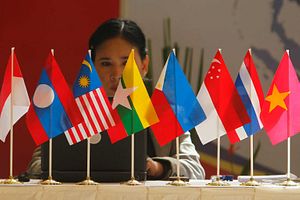Against all odds and expectations, the Association of Southeast Asian Nations (ASEAN) has managed to survive 50 years and will celebrate its golden anniversary in 2017. In many ways, ASEAN is a political miracle and over the last five decades has faced significant challenges. If ASEAN can learn from its past, the miracle may continue well into the 21st century.
Regionalism in Southeast Asia
Southeast Asian history is replete with racial animosities, conflicts, and wars. Western colonial powers further divided Southeast Asian societies and turned their peoples into subjects of the British, French, and Dutch empires. Only Siam escaped colonization by surrendering its peripheral territories to the British and the French. During World War II, Japanese forces occupied all of Southeast Asia, but they accepted Siam as an ally. The Japanese promoted the idea of the “Greater East Asian Co-Prosperity Sphere” under the leadership of Tokyo. Few in Southeast Asia then could imagine such a vision, let alone appreciate it.
After World War II, problems left behind by history, including territorial disputes and distrust, continued to divide Southeast Asians. Communist insurgencies gained ground in North Vietnam and posed a serious national security threat in many other Southeast Asian countries. The primary focus of all government leaders during the post-war era was on nation building and national security. They had no time for cooperation with neighboring countries. In fact the notion of regional cooperation seemed an alien concept.
Initial indigenous efforts toward regional cooperation were short-lived. The Association of Southeast Asia (ASA), established in July 1961 by the Federation of Malaya (including Singapore), the Philippines, and Thailand folded within two years because of tensions between Kuala Lumpur and Manila over their Sabah territorial dispute. Maphilindo – formed of the Federation of Malaya, the Philippines, and Indonesia – lasted about one month in the summer of 1963. It was scuttled by the eruption of border clashes in the Konfrontasi (Confrontation) between Indonesia and Malaya/Malaysia from 1963-1966.
The end of Konfrontasi created a new opportunity for regional cooperation in Southeast Asia. This was when Thailand’s Foreign Minister Dr. Thanat Khoman put forth his initiative on establishing a regional organization so that Southeast Asian countries could get to know one another better, begin to work together for common regional interest, and coexist in peace.

































